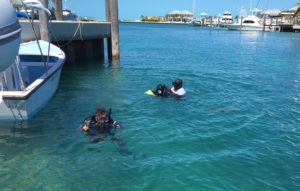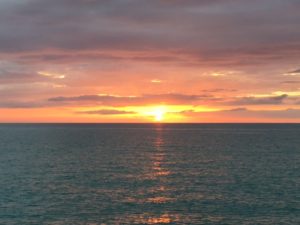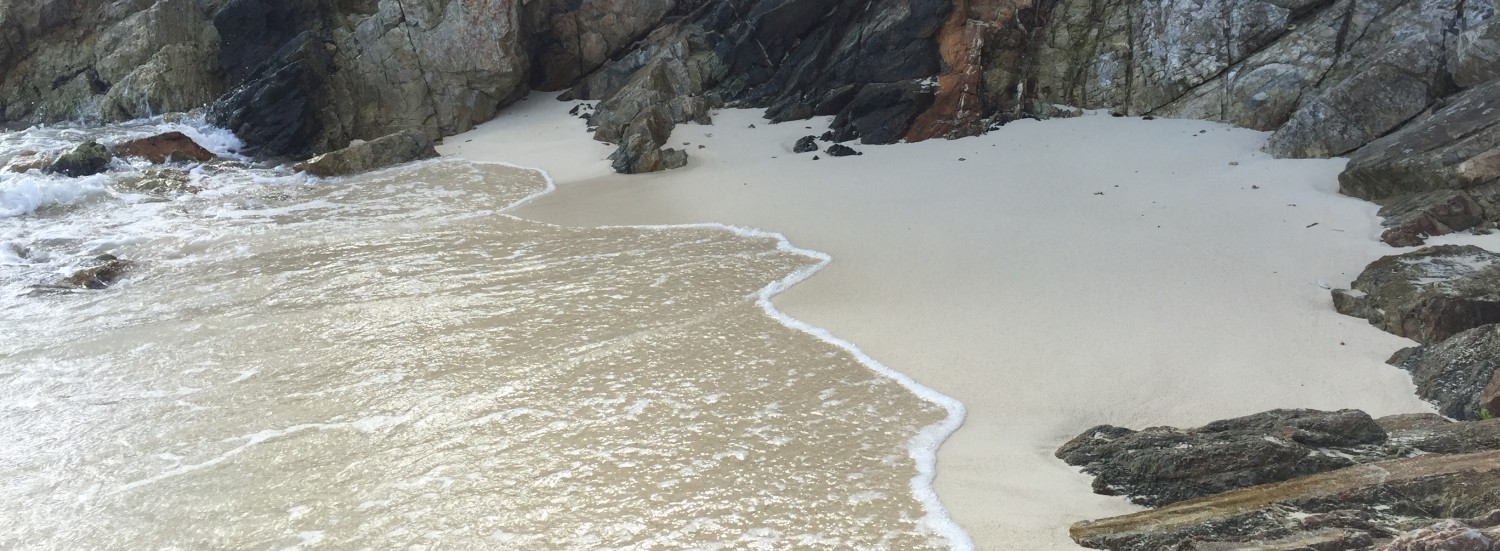Lucky for us, we had insurance coverage (many people self-insure) and are now back in South Florida dealing with the inevitable repairs associated with a lightning strike. As it turns out, lightning strikes are fairly common and there is an established process for getting our boat ship-shape again.
The first step was to get our boat all the way from Cape Eleuthera in the eastern Bahamas back to a repair facility in Florida. Then a surveyor does a full assessment and compiles a report of the damage done by the strike. The repair vendor provides an estimates of the repairs and this is presented to our insurance adjuster for review and approval. Finally, once everyone agrees on the work to be done, repairs can begin. The process could take as long as 3 months from strike to completion, however our situation could take a bit longer since our boat was in a remote location and took 3 weeks just to arrive at a boat yard and then 3 weeks for the damage report due to all the work still being done to hurricane damaged boats from last fall. The insurance company is involved at each step of the process but as the boat owners, ultimately what happens to our boat is our decision.
Speaking of insurance, there is an interesting side-story about our initial search for insurance coverage. We had talked to (I think) 8 different insurance companies, narrowed it down to two companies, and ended up going with International Marine Insurance Services (IMIS), now part of The Gowrie Group. Our decision making process to get to this point is explained here with an update here. The premium for Gowrie was 1% hull value, with a 2% deductible for loss including lightning. Their contender had a premium of 1.5%, and a hull deductible of 1%. We had a now prophetic discussion with the losing side about gambling with the higher deductible associated with a lightning strike, which we figured “would never happen to us”, that will cost us more money in the end. I still owe him a note or phone call telling him what happened <roll eyes>
The underwriter we got through Gowrie was Markel American. They hired 3 X professional crew to sail the boat from Cape Eleuthera Bahamas with no engines, back to Just Catamarans in Harbour Towne Marina, Florida, as they were our “repair facility of choice.” We chose Just Catamarans since we already had work done there last fall when we first bought the boat, and had a good relationship with our project manager and the company owner.
Markel has in turn hired TMS National to perform the initial damage survey. Since we obviously don’t go through this every day, I asked for clarification of the roles for those involved, specifically us as the insured, the TMS National rep, and Claims Adjuster rep from Markel.
For TMS National, the underwriter explained, “TMS is the marine surveyor assigned to this file. They will inspect the vessel and confirm the cause, nature, and extent of damages. They will also confirm what is or is not related to the loss, as well as review all costs to confirm if they are fair and reasonable and in line with industry norms, as well as to ensure that they relate to the loss in question. They can help in locating vendors, but ultimately the choice of vendor is yours – as the vessel owner – to make.”
The underwriter rep explains his role as, “I am the adjuster assigned to your claim. I will review the surveyor’s report of findings, and cost analysis, and apply the terms of the policy to determine what is/is not covered, and issue your settlement. The decision of whether any item or cost falls within the scope of the policy falls to me.”
My role at the time was only to provide my written statement of loss. “This is not necessarily a statement of every individual damaged item. This is intended to be a narrative description of the event (eg – who/what/when/where/how/etc.) Think of it something like this: if someone not-in-the-know boarded ‘Low Flite’, and asked you “Why aren’t things working on your boat?”, and you wanted to give them a descriptive answer in reply….that reply is what’s being requested, only in writing.”
Fast-forward to when the boat was docked with Just Catamarans. The TMS National rep arrived and spent two days going over the boat – both independently and in concert with the techs from Just Cats. As well they went over all of the boat systems to do an initial check of what was working, partially working, or not working. This includes hauling the boat to do a proper inspection of the hull, beyond my uneducated snorkel and then scuba dive back in Eleuthera. Their first order of business was to get boat’s engines working again, so it could move around, including to the haul out lift.

As of mid-April, we are still waiting for the TMS damage report and the finished report from Just Cats, but we seem to have survived the strike with very little actual damage. The following have sustained damage or don’t work at all:
Alternating Current (AC) side:
- Magnum Inverter/Charger
- Main electrical panel neutral bus bar arcing
- unable to check individual outlets as they are wired to inverter
Direct Current (DC) side:
- 3 X Multi-Function Displays (MFD)
- Charter plotter
- Fusion entertainment system remote
- VHF radio partial function
- AIS
- Propane gas valve
- Nav lights
- Fuses 262, 263, 267, 245 associated with bilges
- LED courtesy lights
- Water maker membrane (consequence of having power off for so long)
Rigging:
- nil
Engines & Generator:
- 3 X Automatic Charging Relays (ACR)
- Both engine harnesses
- Both ignition control panels
- No generator raw water coolant flow (boost pump fail?)
Hull:
- Gel coat heat damage radiating out from port pulpit seat stanchion
All of these items should be easy to fix, which is a pleasant surprise. It will simply be a matter of getting the parts delivered and when Just Cats can prioritize us within their seemingly never-ending hurricane season boat repairs.
With so little damage, and no apparent impact on the mast, the prevailing theory is now that we suffered an “indirect strike.” Specifically, the lightening hit the water and was close enough for the associated EMP to do some damage. It may have in fact looked like the video I posted within our previous post. Another possibility is that we were part of a surface to cloud event, where the lightning started at the water and went up through us, or close by us, on its way to the cloud. The exact opposite path most of us would think is how lightning travels during a storm.
What is an unexpected (negative) surprise is the state of the boat when handed back to us by the professional delivery crew. We won’t go into specifics but only to say the boat has sustained physical damage, and the rigging is currently unsafe to manipulate. As a result, oddly enough, our focus with the underwriter is now less with respect to damage caused by lightning and more concerned on damage sustained while in the care of the delivery crew. Who’d a thunk it?
A bonus is that supplementary living expenses are included in our policy, so we found a nice little apartment through Airbnb close by while we wait for the next steps:
- Get engines running again;
- Haul boat to inspect the hull;
- 3rd party riggers to inspect rigging damaged by professional crew, and add to repair list;
- Compare insurance survey report with Just Cats survey report;
- Agree on work plan;
- Repair problems; and
- Sail off into the sunset…again.


You need to visit the desert!
I wonder who I know that has a place in the desert 😛